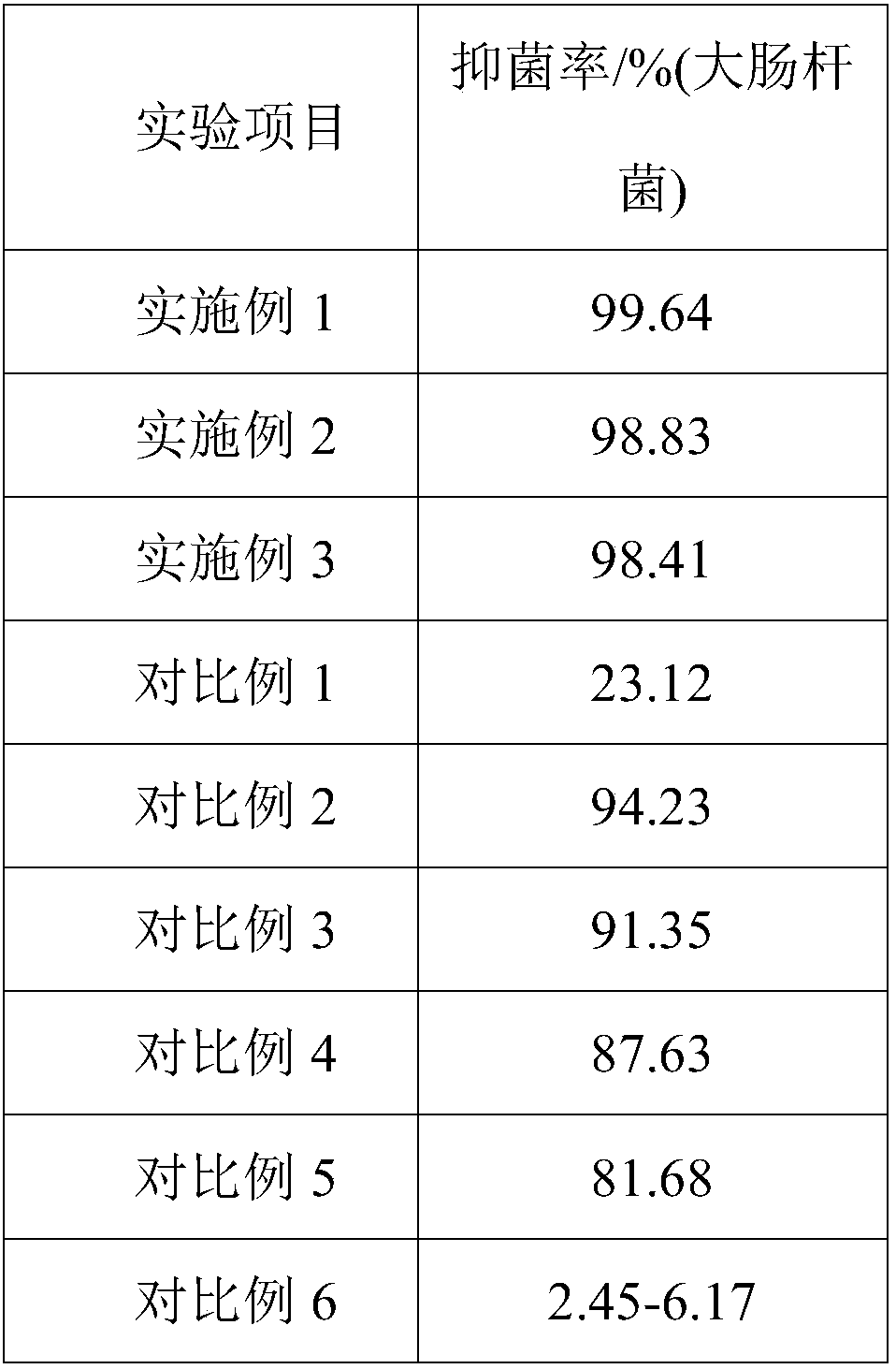Antibacterial synthetic resin, and preparation method thereof
A technology of synthetic resin and urea-formaldehyde resin, applied in the field of antibacterial synthetic resin and preparation thereof, can solve the problems of insufficient antibacterial properties of synthetic resin and the like
- Summary
- Abstract
- Description
- Claims
- Application Information
AI Technical Summary
Problems solved by technology
Method used
Image
Examples
preparation example Construction
[0020] The preparation method of described antibacterial synthetic resin comprises the following steps:
[0021] S1. Mix polylactic acid, organic fluorine epoxy resin, polyphenylene sulfide and polycarbonate evenly in parts by weight, heat up to 80-90°C, keep warm for 20-40min, then add calcium molybdate, trimethyl phosphate, polycarbonate Mix caprolactone, fluorine micropowder, nano-montmorillonite, zinc borate, chlorinated paraffin and single-wall carbon nanotubes evenly, continue to heat up to 110-120°C, keep warm for 1-2h, and then stir at 1500-2500r / min for 30 -50min, cooled to room temperature to obtain the base material;
[0022] S2. Mix chitosan, zinc oxide, silane coupling agent KH-560 and antibacterial modification additive evenly, heat up to 80-90°C, keep warm for 10-20min, then stir at 650-850r / min for 10-20min , cooled to room temperature to obtain modified material;
[0023] S3. Raise the temperature of the base material to 80-90°C, keep it warm for 30-50 minut...
Embodiment 1
[0026] An antibacterial synthetic resin, in parts by weight, comprising the following raw materials: 50 parts of polylactic acid, 25 parts of organic fluorine epoxy resin, 10 parts of polyphenylene sulfide, 12 parts of polycarbonate, 6 parts of polyhydroxybutyrate, 6 parts of hydrogenated p-phenylenediamine, 4 parts of urea-formaldehyde resin, 3 parts of polypropylene resin, 4.5 parts of polyhydroxybutyrate, 4 parts of lauryl acrylate, 3 parts of calcium molybdate, 6 parts of trimethyl phosphate, polycaprolactone 6.5 parts of ester, 4 parts of fluorine powder, 3 parts of nano-montmorillonite, 4 parts of zinc borate, 6 parts of chlorinated paraffin, 6 parts of dispersant CNF, 3.5 parts of single-walled carbon nanotubes, 8 parts of chitosan, 10 parts of zinc oxide 5 parts, 5 parts of silane coupling agent KH-560, 15 parts of antibacterial modification auxiliary agent.
[0027] The antibacterial modification additive is prepared according to the following process: 10 parts by weigh...
Embodiment 2
[0033] An antibacterial synthetic resin, in parts by weight, comprising the following raw materials: 40 parts of polylactic acid, 35 parts of organic fluorine epoxy resin, 5 parts of polyphenylene sulfide, 16 parts of polycarbonate, 4 parts of polyhydroxybutyrate, 9 parts of hydrogenated p-phenylenediamine, 2 parts of urea-formaldehyde resin, 5 parts of polypropylene resin, 3 parts of polyhydroxybutyrate, 8 parts of lauryl acrylate, 1 part of calcium molybdate, 8 parts of trimethyl phosphate, polycaprolactone 3 parts of ester, 6 parts of fluorine powder, 1 part of nano-montmorillonite, 5 parts of zinc borate, 4 parts of chlorinated paraffin, 9 parts of dispersant CNF, 2 parts of single-walled carbon nanotubes, 10 parts of chitosan, 8 parts of zinc oxide 6 parts, 6 parts of silane coupling agent KH-560, 10 parts of antibacterial modification auxiliary agent.
[0034] The antibacterial modification additive is prepared according to the following process: 5 parts by weight of nat...
PUM
 Login to View More
Login to View More Abstract
Description
Claims
Application Information
 Login to View More
Login to View More - R&D
- Intellectual Property
- Life Sciences
- Materials
- Tech Scout
- Unparalleled Data Quality
- Higher Quality Content
- 60% Fewer Hallucinations
Browse by: Latest US Patents, China's latest patents, Technical Efficacy Thesaurus, Application Domain, Technology Topic, Popular Technical Reports.
© 2025 PatSnap. All rights reserved.Legal|Privacy policy|Modern Slavery Act Transparency Statement|Sitemap|About US| Contact US: help@patsnap.com

